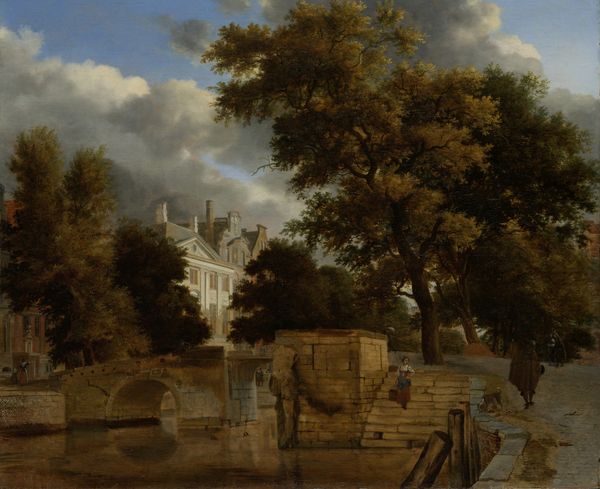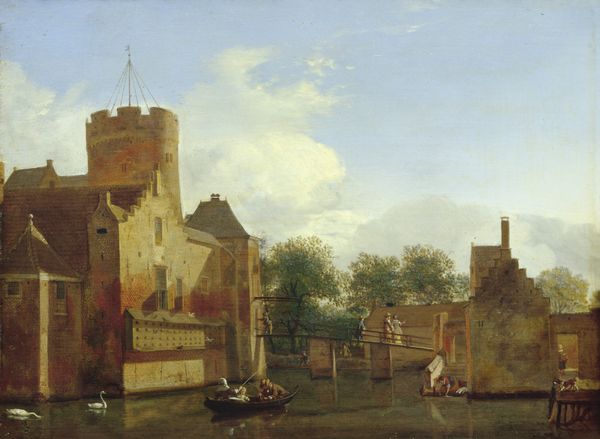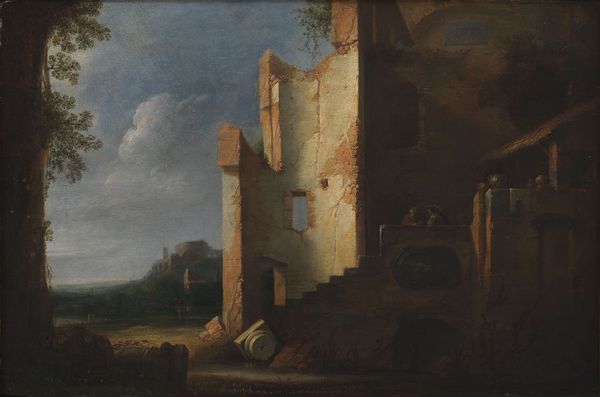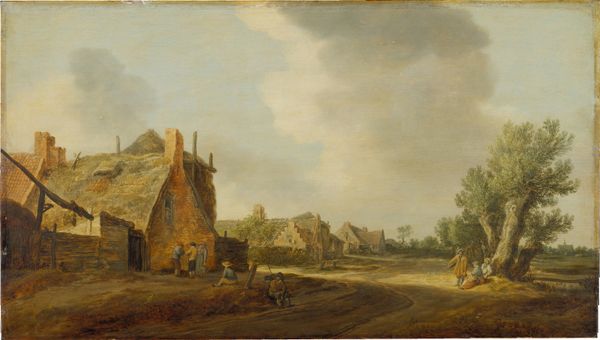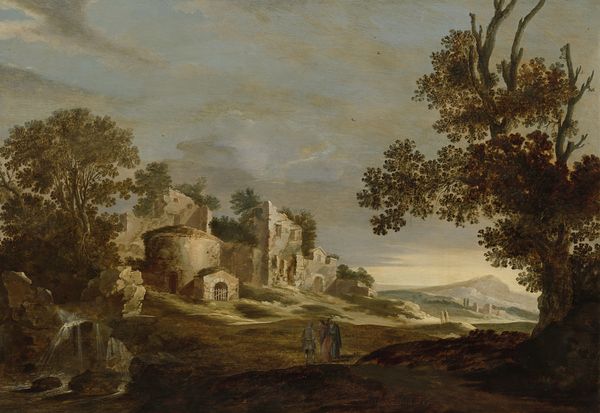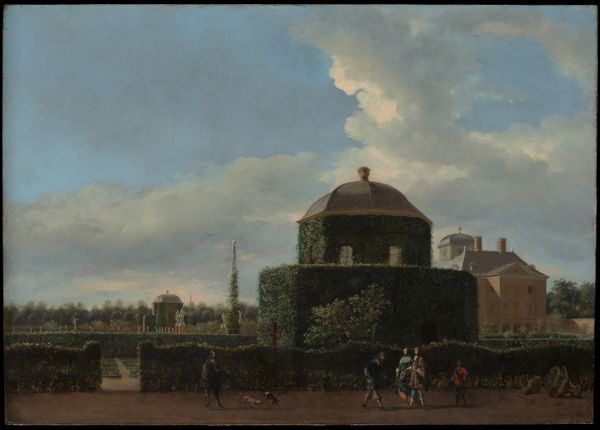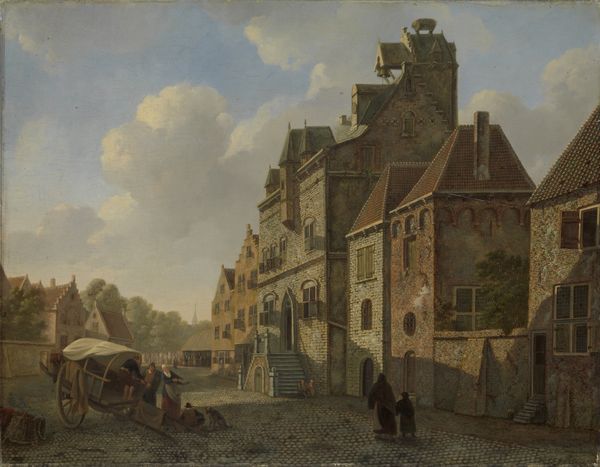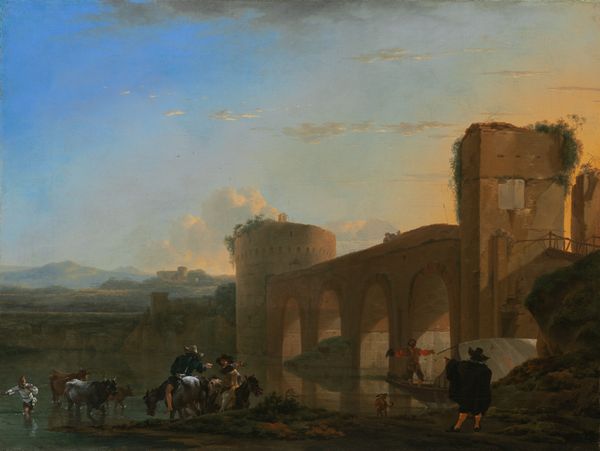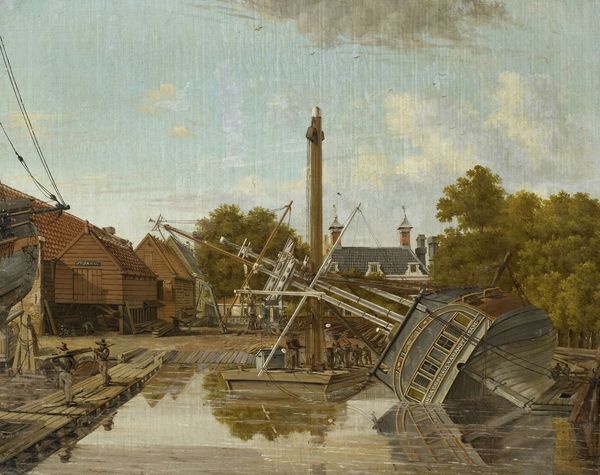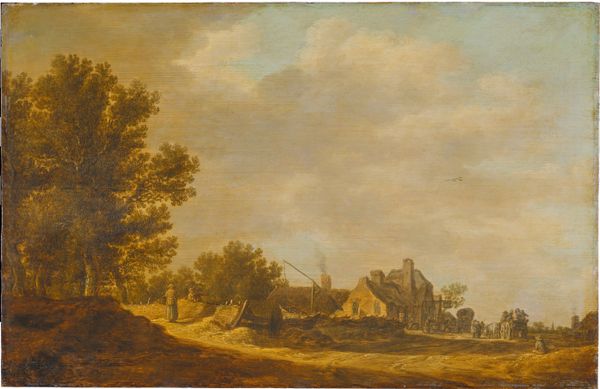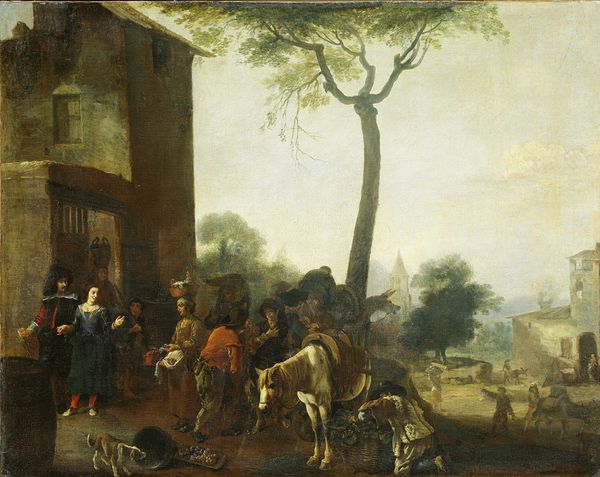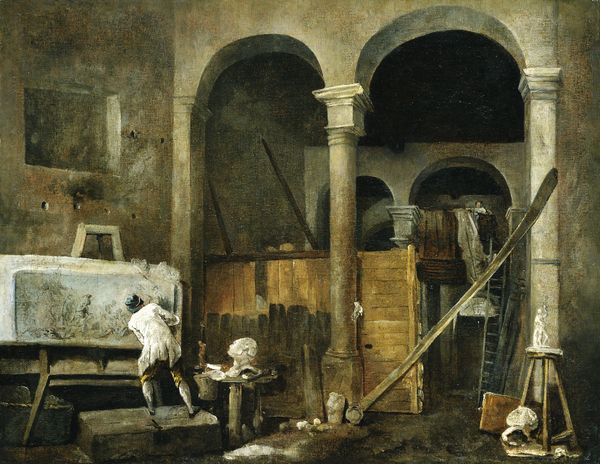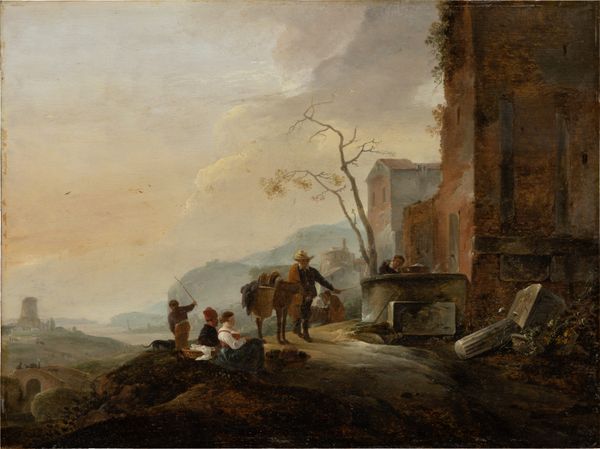
painting, oil-paint
#
baroque
#
dutch-golden-age
#
painting
#
oil-paint
#
landscape
#
perspective
#
oil painting
#
cityscape
#
genre-painting
#
realism
Dimensions: height 36 cm, width 44.5 cm, depth 6.3 cm
Copyright: Rijks Museum: Open Domain
Editor: So, this is Jan van der Heyden’s "The Drawbridge," painted sometime between 1660 and 1672. It’s an oil painting and it’s currently housed in the Rijksmuseum. The atmosphere feels so still, so deliberately composed. What strikes you most about this piece? Curator: The placid nature of the Dutch Golden Age can be deceiving, don’t you think? While Van der Heyden presents us with this idyllic urban scene, complete with carefully observed architecture and tranquil canals, I always wonder, what are we *not* seeing? What socio-political currents are subtly influencing this apparently objective depiction of daily life? Editor: What do you mean? Curator: Well, consider the Dutch Republic's burgeoning mercantile power at this time. The wealth displayed – in the solid buildings and well-dressed figures – was built, in part, on global trade, including some very exploitative colonial practices. Does the artist subtly critique or consciously ignore this context? Where is the representation, for instance, of those excluded from this prosperity? Who maintained the city’s infrastructure and who was unable to have a voice? The perspective highlights the dominance of burgher class. Do you think that’s accidental? Editor: That's a completely different way of looking at it. I was focused on the details and the technique. Now, I can’t unsee that tension. Curator: Exactly! These genre scenes weren't simply records. They actively shaped perceptions, reinforced social hierarchies. How might contemporary artists engage with this imagery in order to make those narratives visible, these inequities exposed? Editor: This makes me want to re-evaluate everything I thought I knew about Dutch Golden Age painting! Curator: And that’s the most exciting part of art history—that constant re-evaluation and questioning!
Comments
rijksmuseum over 2 years ago
⋮
Summer light bathes a drawbridge and a row of canal houses. This city view may have sprouted from Van der Heyden’s imagination, but it was based on actual sites in Amsterdam. In the right foreground a dog relieves itself on the column of an antiquated building that resembles the old town hall, which burned down in 1652. The two millstones in the centre foreground are objects that were traded near the Amsterdam harbour.
Join the conversation
Join millions of artists and users on Artera today and experience the ultimate creative platform.
